This years EOC in Bulgaria was hopefully the last international championships without live GPS-tracking. As a spectator at home in front of the computer/big screen, I have got used to live GPS-tracking from all the big national events in Finland, Sweden and Norway, several smaller national/regional events in both Finland and Norway, and even on some training camps.
Let us hope GPS-tracking is set as a requirement for the organizers in the future. I think this was the last EOC/WOC without live GPS-tracking – time will tell if we are there yet…
The remainder of 2010 looks good for the international races: The World Champs in Trondheim will have GPS-tracking, Jukola, most of the Nordic Orienteering Tour, EYOC in Spain will also, and so on (for JWOC in Denmark I have found no information yet – please add a comment below if you know any details there will be no GPS-tracking – see comment below).
Barely good enough for the core community
During the last week, I have followed the European Championships closely. The organizers had some problems with live results / live speaker sound in some of the competitions, but overall either results or speaker sound worked for most of the time – making it possible to follow most of the excitement from all around the world. This was nearly good enough for the core of the orienteering community, but some probably turned their attention to other matters when the coverage stopped working.
Required coverage in the future
In my opinion, this is what is required for the core orienteering community to be interested in following the competitions in a championships:
- Live results which work all the time (including removing DSQ, fixing other errors in the live results – at the EOC the live results had several errors for some of the competitions – and these being the only results available for hours after the competitions, it was not easy to know what had really happened if you hadn’t listened to the speaker)
- Live speaker sound
If you want to attract a broader range of the orienteering community, you have to add:
- Live GPS-tracking – to really get to feel the excitement
To get out to all of the orienteering community – and also people outside the orienteering community:
- Live or recorded video feed/TV is the only way. And the live video feed/TV must include graphics with running time, GPS-tracking, etc. More professional broadcasts = better chance to get outside the orienteering community.
The future looks bright for the orienteering community who wants to follow their heroes – watching their every step from far away. It also looks like we are getting closer to the productions which can get viewers outside the orienteering community: The plans of the World Champs in Trondheim this year seems very promising – and with World Champs in France, Switzerland and Finland coming up the next years – and EOC in Sweden in 2012 – there should be good chances for a lot of high quality productions. The plans for coverage of the Nordic Tour and most of the remaining World Cup competitions this year also looks good. However – the downside is that this evolution in technology makes it more difficult for less developed orienteering nations to organize the important races in the future…
EOC maps and courses
After co-authoring a report on separating runners in orienteering, I was very curious about how the organizers/route planners had solved the problem of separating the runners. It is difficult to make a real conclusion before seeing splits in a form which makes it possible to make a proper analysis – and before seeing route choices of more runners – but here is a preliminary conclusion:
- There were quite a few groups, some of them probably affecting the overall results also well inside the top 10.
- The separating method used (butterflies), is the method which it was advised against in the report (Ref: Short butterflies do not split packs – they only put constraints on the planning which again may lead to more packs due to less long legs and nothing gained by the butterflies)
- There were few long legs with many different route choice options (as far as I can judge without seeing the routes of several runners) – see map men here – map women here.
- Using 3 minutes start interval saved the competition (but I’ll have to see a detailed following analysis to say this 100%). For example, Hubmann and Khramov were together for large parts of the course, and Khramov would have finished 4th if he had not missed a punch. With 2 minutes start interval, who knows what would have happened.
Without being in the terrain, it is difficult to say too much else about the maps and courses. From the comments I have seen, some were disappointed by parts of the terrain being “only typical continental” and not really interesting – others were happy with varied orienteering.
Twitter coming to elite orienteering?
Is Twitter finally coming to elite orienteering? During EOC, the World of O frontpage has featured the latest tweets from “Elite Orienteering related Twitter users”. I have tried to get the top runners to use Twitter before, but still only a very few have taken it up. During EOC, Eva Jurenikova (Czech Republic) and Christian Bobach (Denmark) gave us some insight into what was happening “behind the scenes”. I hope more will follow – please let me know if there are some missing on my list. And if you are a Top Elite Orienteer: Twitter is a good and little time-consuming way to share your thoughts with the community.
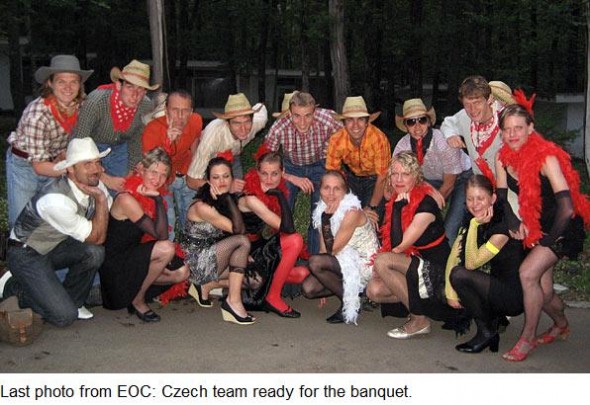
Last photo from EOC: Czech team ready for the banquet. http://twitpic.com/1ultx2
5th. For the first time among 6 best at big champs. Would not believe my performance is enough for it. Many small mistakes. 5 Czech wome …
Oh no, Karro ruptured her Achilles tendon during middleF.
En god dansk dag. Medalje til maja som blev 3er og to 6. Pladser. En til signe og en til tue. Så nu er vi på vej frem over.
EOC coverage at WorldofO.com
Finally a few words about the EOC coverage at WorldofO.com. The coverage has been quite extensive. Several articles have been published each day – and the Fantasy World Cup has been updated after each final. Total pageviews at WorldofO.com during the EOC-week has been more than 110.000. In addition I had a LiveBlog open at WorldofO.com at the Sprint Finals and the Long Finals – each attracting about 5-600 viewers live – and many more in replay mode. A fun week – with a lot of interesting orienteering!
Maps from EOC 2010
As I know most of the readers of WorldofO.com are crazy for maps – here are the maps from EOC 2010 again:
- Map Long Final men – Webroute for the mens long leg (6-7)
- Map Long Final women – with route of Simone Niggli
- Map Middle Final women (Simone Niggli)
- Map Middle Final men (Daniel Hubmann)
- Map Middle Final men / women without course
- Map Relay women (Simone Niggli)
- Map EOC Middle Qual Men (Zinca Iounut)
- Map EOC Middle Qual Women (Simone Niggli)
- Maps EOC Middle Qual without route: Women A, Women B, Women C, Men A, Men B, Men C
- Map Long Qual, Women (Simone Niggli)
- Map Long Qual, Men (Jörgen Wickholm)
- Map Sprint Final, Men (Daniel Hubmann)
- Map Sprint Final, Women (Simone Niggli)
- Map Sprint Qual, Men (Tue Lassen)
- Map Sprint Qual, Women (Simone Niggli)
- More maps from EOC 2010 – including maps without routes from all qualification heats
- Webroute – Long Qualification, leg 6-7 in heat A for the men

 World of O News
World of O News


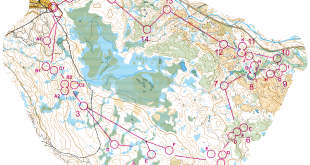
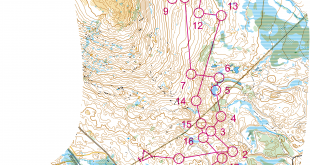
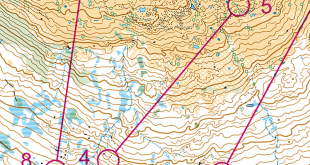
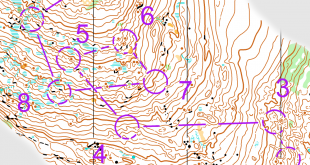
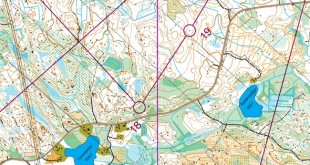
“…(for JWOC in Denmark I have found no information yet – please add a comment below if you know any details).
Why don´t you simply send them an E-mail yourself:
Secretariat Bo L. Andersen, e-mail: info@jwoc2010.dk
@Finn: E-mail sent:)
@Jan: I fully agree with you. I tried to follow the events via the web, but was much too often disappointed by seeing muddled live results or even no results at all. It took far too long to see final results online (espacially at the beginning of EOC) – not speaking about “news” – they could be found faster on national o-sites than on the official EOC-site (I think from 29th or 30th May on there were NO news for 2 or 3 days at all…).
Just disappointing (sorry to say that)!
@Finn: I received an answer from the JWOC-organizers. No GPS-Tracking is planned during JWOC in Denmark, no LiveBlog, and there was no interest to cooperate with World of O on a LiveBlog.
That’s just a shame, to invest so much in training and preparation and then not to give a chance to those hardworking athletes to have a little bit of fame for themselves it’s just unfair..
Another big problem of EOC-2010 is a bad quality of model event maps.
thank you jan for mentioning this. I think it should be the responsibility of the IOF to help the organizer to provide good broadcasting. They should give them their know-how (for example also responsible persons from IOF which control this broadcasting thing).
Like that it’s no problem to give championships to less developped countries..
I have been as disappointed as you, and this lack of coverage was also a huge barrier for my own reporting work. Therefore you might find my position surprising. But maybe the fact of working as a media chief (of one of those events you tagged as “very promising”) makes one see the problem from another side?
Sponsors are attracted when you can assure them large media coverage of the competition and many spectators. The biggest sponsors you get for the hugiest competitions are almost never orienteering firms: it can be a special firm not at all linked with this sport, but wanting to be seen and attracted by the type of population orienteering represents (middle/high economic class, high degree of studies, etc). Most of the sponsors estimate the success of a competition by the number of articles that were published in the national/local newspapers + television/radio broacasts. But those firms aren’t (I speak from experience, you might disagree) interested in the orienteering community. For an insurance company in Bern, it is not very important to be seen by Finn spectators. What is much, much more interesting for them, is to be seen by the national readers/viewers, who will be their potential clients.
This is, when working in an organisation commitee, your success and the satisfaction of the sponsors depends on the national/local coverage. You do not depend mostly on the orienteering community, which is only a such small fraction of the total population.
In that meaning, I considere providing live coverage for the orienteering community as a kind of “luxury”. It really is. Because the gains you obtain from the work you invest are so small! If your competition is organized in one of those “big countries” of orienteering, where you have the human and financial ressources to afford it, and where the fact that X number of internet viewers have followed your competition might have an influence on your sponsors (because the sponsors are international or because the viewers are from the country), fine. But in other countries the first matter is an other. And I must say that the live TV broadcast you mentionned cost a so huge amount of money that even in the biggest orienteering countries, this isn’t a automatic thought. I’m always surprised by the number of 0 you have to put one after the other in order to achieve this. And this is again a question of sponsors…
Despite having suffered from this lack of coverage, I am thus not blaming the Bulgarian organization, for I can easily imagine the choices one has to make. Everything is a question of resources, and of how to attribute the resources in order to make this competition work (also financially). In some countries orienteering is more developped than in others, and the rssources are simply different.
I would personnally find it sad to concentrate even more the races in those big countries of orienteering, for reasons that you mentionned. Organizing a huge competition is also a way to boost the development of orienteering in other countries or region. The orienteering world is already too splitted to do something similar.
I would therefore more focus on knowing how the organisation was, and whether the journalists present there were given enough infos to do their job and relay the infos to the countries of the runners. The rest is somehow secundary, we have to admit.
Best regards!
L., thanks for your long comment on the article. In my comment which was focused on the required live coverage for the future, I did on purpose concentrate on the requirements for the orienteering community, due to the very high costs required for live coverage for people outside the orienteering community.
I divided into three categories depending on who you want to produce the live coverage for,
– the core orienteering community
– a broader range of the orienteering community
– all of the orienteering community – and also people outside the orienteering community
As I wrote above, to reach the latter category – i.e. people outside the orienteering community – with a live broadcast, I think is impossible without TV broadcast. This is very expensive. However, this group is also the group which the sponsors are interested in, which you talk about in your comment (and for which there is money, if there is for anybody).
The live coverage for the orienteering community (the two first categories) is not very expensive: Proper live results, live audio and live GPS tracking can be managed on a rather modest budget ; EYOC in Spain is for example planning this combo for their event.
Thus, I am not sure that I really understand your point related to what I discuss in my opinions regarding the live coverage. Sure, many of the event sponsors are not mainly interested in the live coverage, but I am not talking about excessive cost either.
Also, in my opinion, if you don’t even manage to keep the orienteering community interested, you will loose the stars of tomorrow from the sport – and that is in nobody’s interest. Ultimately not even the sponsors.
I don’t agree that the rest is secondary. I think both are important – the live coverage is also a very important job of the organizers. The Leibnitz convention also has one of the key points given as “to make IOF events attractive for TV and Internet” – Internet being a very important medium of the future.
And I can imagine (based on my experience from previous WOCs) that the journalists present were quite frustrated with the problems with the live results not being corrected regarding DSQs etc. the hours after the event was finished when they were preparing their articles – that makes their work a lot more difficult. Also, the journalists present would have had a much better basis for their articles if there would have been live GPS tracking.
BTW, note also that my conclusion was that “overall either results or speaker sound worked for most of the time – making it possible to follow most of the excitement from all around the world. This was nearly good enough for the core of the orienteering community” – thus I am not saying that this was far from good enough for the core of the orienteering community…
Hi Jan,
What I tried to emphasize in my comment was the relative “unimportance” of the orienteering community, when put in balance with the rest of the population and seen from a perspective of gains: raise the attractivity of orienteering and obtain (and keep!) sponsors. I think that we both agree that those two points have to be the priority of any media concept. I repeat myself, but I do think that the points you mentionned (TV live coverage, internet) are only effective starting from a certain level of popularity in the region. It is only when the population has already a vague idea of orienteering that TV-coverage makes sense: before that, more basic communication steps have to be achieved. Thus: yes, this is absolutely necessary for the future. But this future is more or less far away depending on the countries, and in some of them there are more important steps to achieve before.
Please note also that exception made of the TV-coverage, I never talked about costs but about resources, including HUMAN and financial resources.This is actually a very serious matter in less developed orienteering regions, where the same people tend to have to accumulate all functions. All in all, what I tried to transmit through my comment is that each country, having a different state of development in orienteering, has also different resources. The way they have to allocate the resources is also very various, in order to assure the sustainability of the competition and a raise of popularity. Live coverage for the orienteering community can’t be the first matter of the organization commitee of a race held in a less developped orienteering country. As long as the international journalists are able to do their job, the infos are relayed through them to the various medias, preventing from my opinion any desinterest of the orienteering core.
Currently we all see an enormous gap between the different countries of the orienteering world. As I said, I don’t think it is the purpose of anyone to make it become even bigger. If the IOF states the internet coverage is now a crucial point and highers the standards, then I considere it is the role of the major orienteering countries to help with that with human resources and know-how: they are the ones who benefit from them. It is sometimes just too early for the other regions to benefit themselves from those “extras”.
There is a huge gap between the expectations of those major countries and the concerns of the smaller ones, and this is what I tried to clarify.
Best regards
EOC 10 – Packfigures from the Long Final
Summary: Not to much groups in the first part of the mens and womens ranking. Andrej Khramov most probably did not disturbe the podium. If he would not have mispunched the central control of the Butterfly he would have disturbed the TopTen. The butterfly in the mens class did not work at all, because it was postioned to early. In contrary it was more a sequence of short and technically demanding controls with the known effect of advancing building of groups.
The phi at the womens did indeed separate the groups build beforehand but it also was remarkably advancing the building of new groups by the effect mentioned above.
The three minutes start intervall seems to really decrease grouping. The groups seem to be fewer and form later. As the consequence to this measure effective separations techniques should be placed later in the course (here it was after 2/5 in the mens race). This would furthermore have the positive side effect, that these long lasting groups towards the end of the race, probably having the biggest impact (e.g. EOC 08 Mens Long Final) would be decreased/splitted.
L. Thanks for the interesting discussion. Regarding cost versus human resources, I know from experience that it doesn’t have to cost you too much to hire people do to most of the live coverage work (e.g. live results, live speaker sound + GPS tracking). But I see your point – but still think that the orienteering community should be important for the organizers…
@Martin: Thanks a lot for your analysis. Seems like the three minute start interval and course setting was successful regarding avoiding grouping, despite what it looked like to me before being able to make a real analysis. That is excellent news – and very good for the orienteering sport. Just a pity (from that point of view) that the start interval at this years WOC is 2 minutes….
@Jan: How comes the WOC does not apply IOF Rules?
@Martin: As far as I know, it was somehow too late in the process to enforce 3 minutes start interval on the WOC 2010 organizers, as the program was already set/agreements made when the 3 minute IOF rule was made. I recall that I read that somewhere.